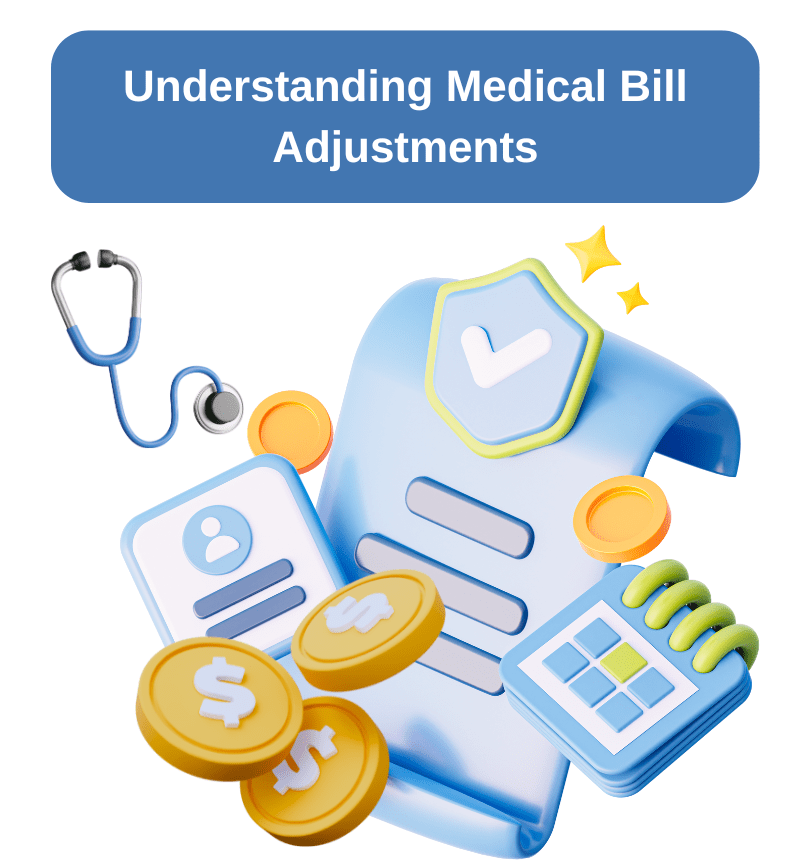Medical billing is never simple. Charges are entered, insurance rules apply, and patients receive statements. In this process, adjustments play a central role. An adjustment is the difference between what you charge and what you are allowed to collect. Understanding adjustments is essential if you want to protect the revenue of your practice.
What are Adjustments on Medical Bills?
An adjustment is a reduction applied to the amount billed. It is not a write-off of money you failed to collect from patients. It is the amount you are not allowed to charge because of payer agreements or regulations.
For example:
- A clinic charges $200 for a visit.
- The payer contract allows only $150.
- The $50 difference is recorded as an adjustment.
You cannot collect that $50. It is not lost revenue. It is simply not part of the contracted reimbursement.
Common Types of Adjustments
Adjustments are not all the same. They come from different sources and have different effects.
These result from agreements with insurance companies. You agree to accept a lower amount as payment in full. This is the most common adjustment.
2. Government Program Adjustments
Medicare and Medicaid set fixed rates. If you bill more, the difference is adjusted.
3. Administrative Adjustments
These include discounts, charity care, or corrections made to patient accounts.
4. Denied Claim Adjustments
If a payer denies a service as not covered, you may need to adjust the charge-off. This is different from contractual reductions because it reflects a denial.
Why Adjustments Matter
Adjustments directly influence how much revenue you receive. They show whether your billed charges align with your contracted rates. High adjustments mean a large part of your billed charges are not collectible. Low adjustments suggest your billing is closer to your expected reimbursement.
Your team must know the difference between expected adjustments and avoidable write-offs. Expected adjustments are normal. Avoidable write-offs reduce revenue because of errors.
How Adjustments Affect Revenue Flow
If you bill $1,000,000 in charges and contractual agreements reduce this by $300,000, your practice collects $700,000 as net revenue. If your staff fails to appeal denials or misses claim edits, additional amounts are written off as adjustments. This lowers your true revenue even further.
Revenue impact is seen in three areas:
- Accuracy of billing. Inflated charges create large adjustments.
- Denial management. Poor follow-up turns avoidable balances into adjustments.
- Contract compliance. If you do not track payer behavior, you risk excessive reductions.
Reducing Unnecessary Adjustments
Your practice cannot avoid contractual adjustments. Those are fixed. What you can do is limit the avoidable ones.
Steps include:
- Verify patient eligibility before visits to prevent non-covered claims.
- Medical Code services correctly and match payer rules.
- Train staff to spot underpayments and request corrections.
- Track payer trends to catch patterns of excessive reductions.
- Separate contractual write-offs from avoidable write-offs in reports.
Reporting on Adjustments
Clear reporting helps you understand adjustment trends. Your medical billing system should separate types of adjustments. Review monthly reports to track patterns. For example, if denied claim adjustments are increasing, investigate coding accuracy or eligibility checks. If payer-specific adjustments grow, review contract compliance.
Practical Example
A multispecialty practice billed $2,000,000 in one quarter. Contractual adjustments were $600,000. Denied claim adjustments added another $80,000. Administrative write-offs contributed $20,000. Net revenue reached $1,300,000.
When the practice improved eligibility verification and trained staff on coding, denied adjustments dropped by $50,000 in the next quarter. That improvement increased net revenue without adding new patients.
Final Thoughts
Adjustments are not always bad. They are part of the billing system. The problem arises when avoidable adjustments grow unchecked. You should monitor them closely, separate contractual from preventable categories, and train staff to act quickly. Each dollar you save from preventable write-offs adds directly to your practice revenue.

